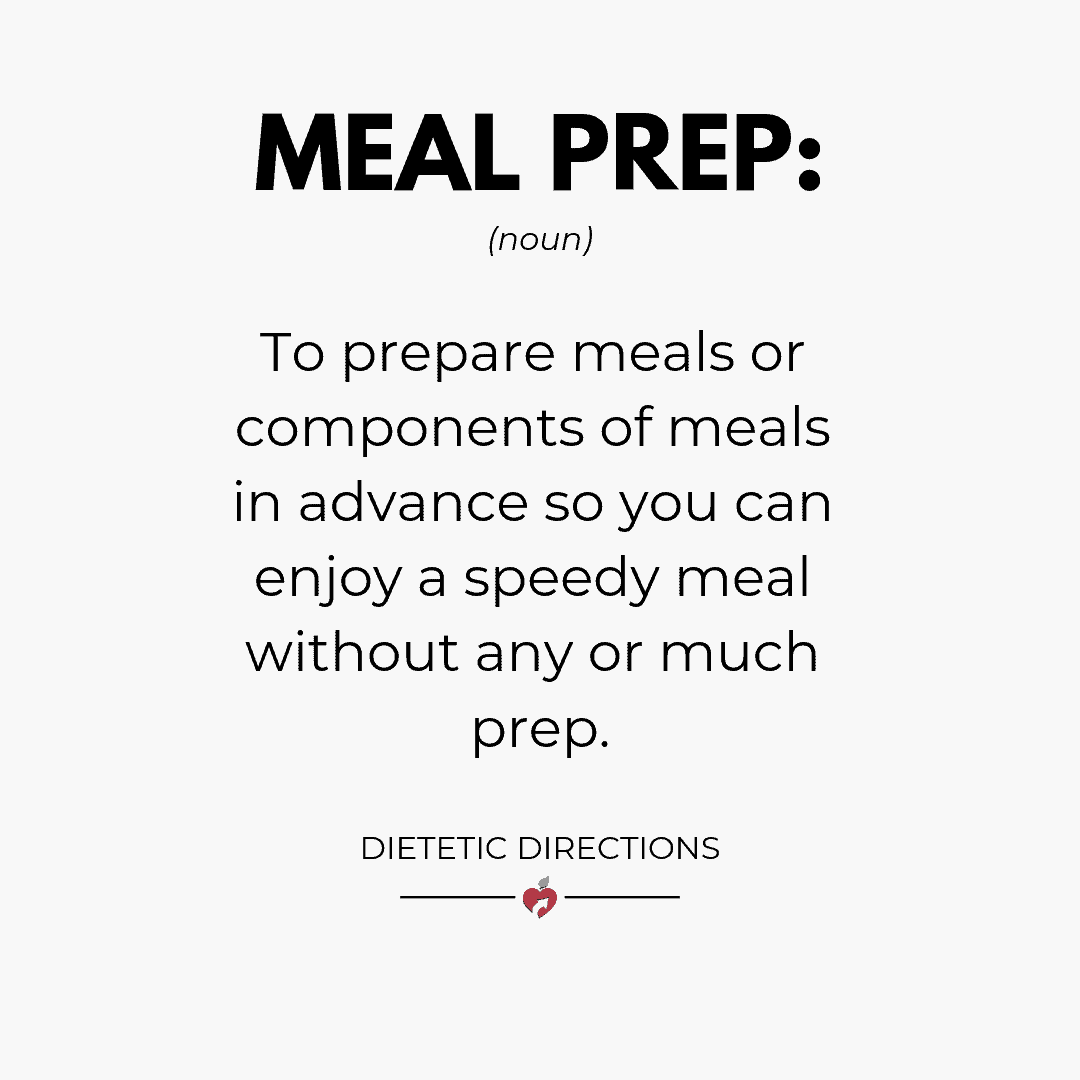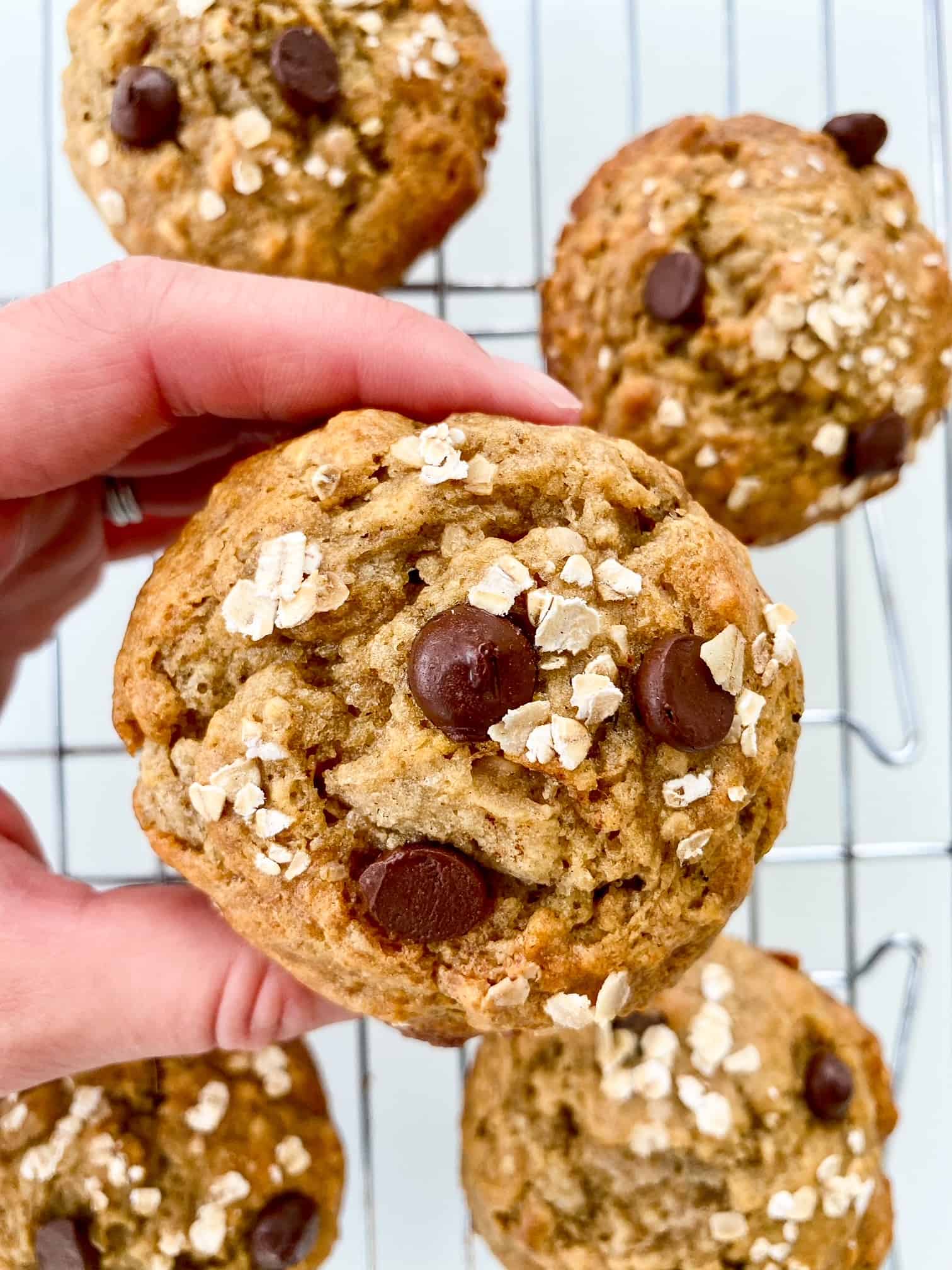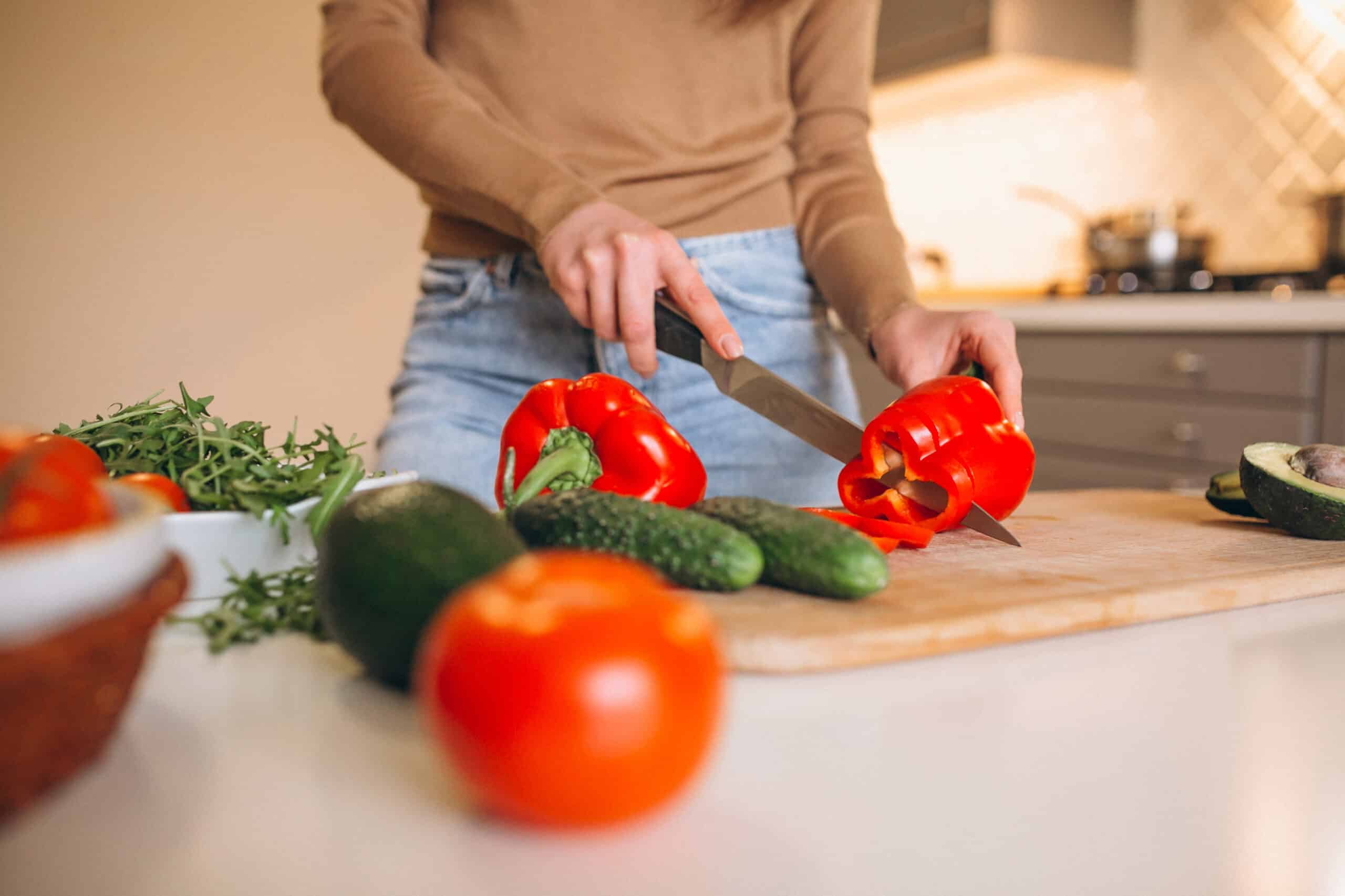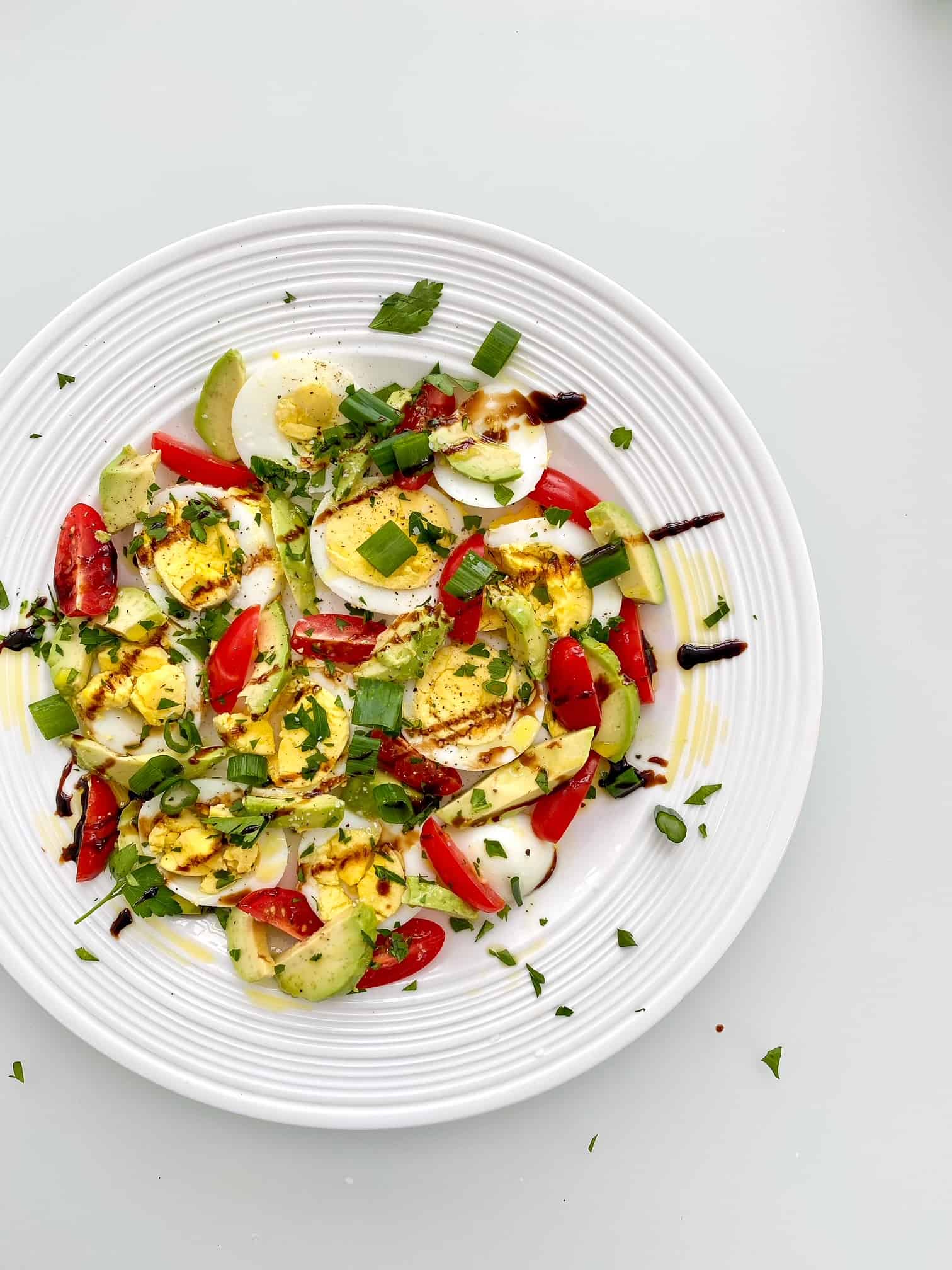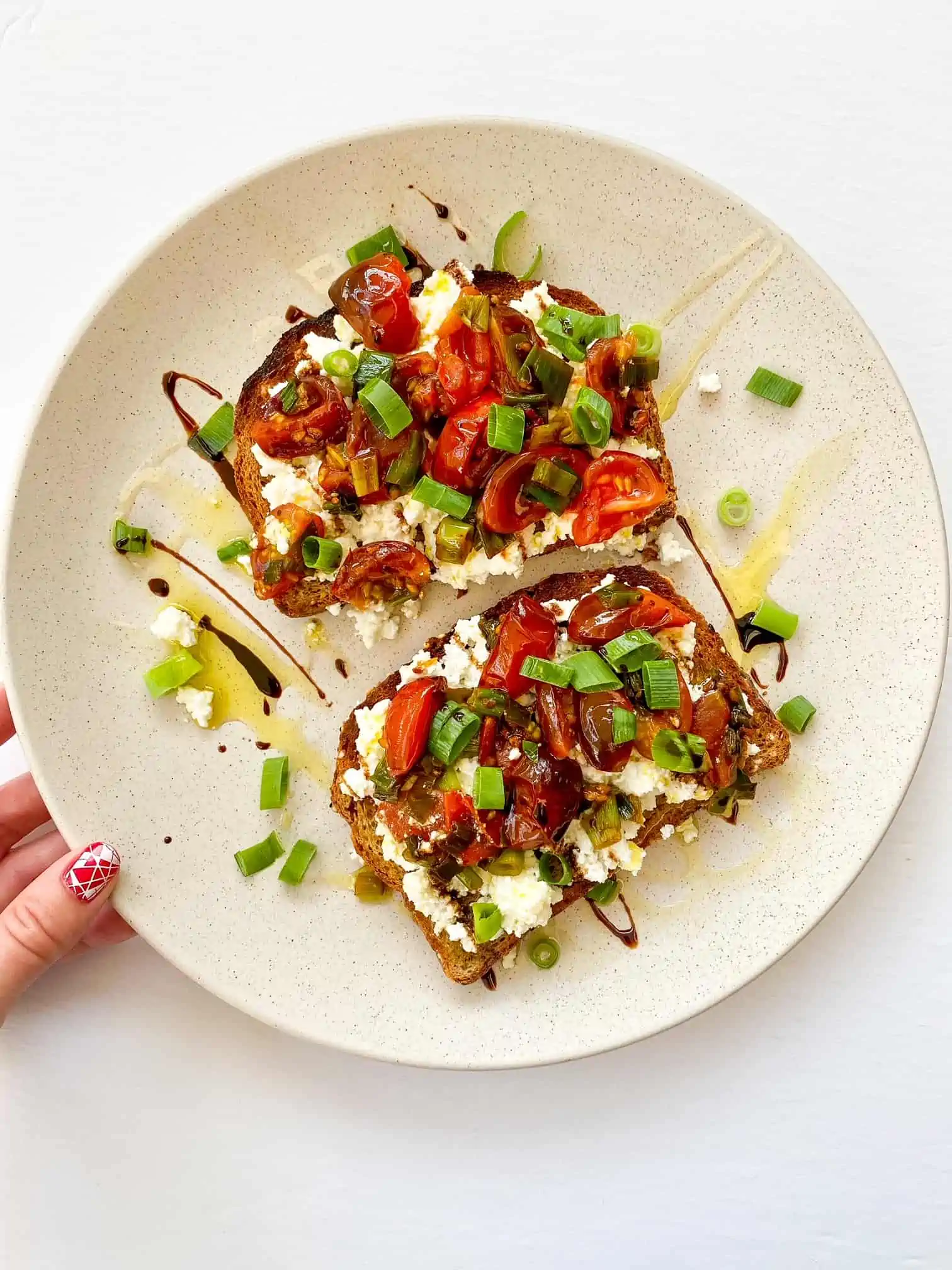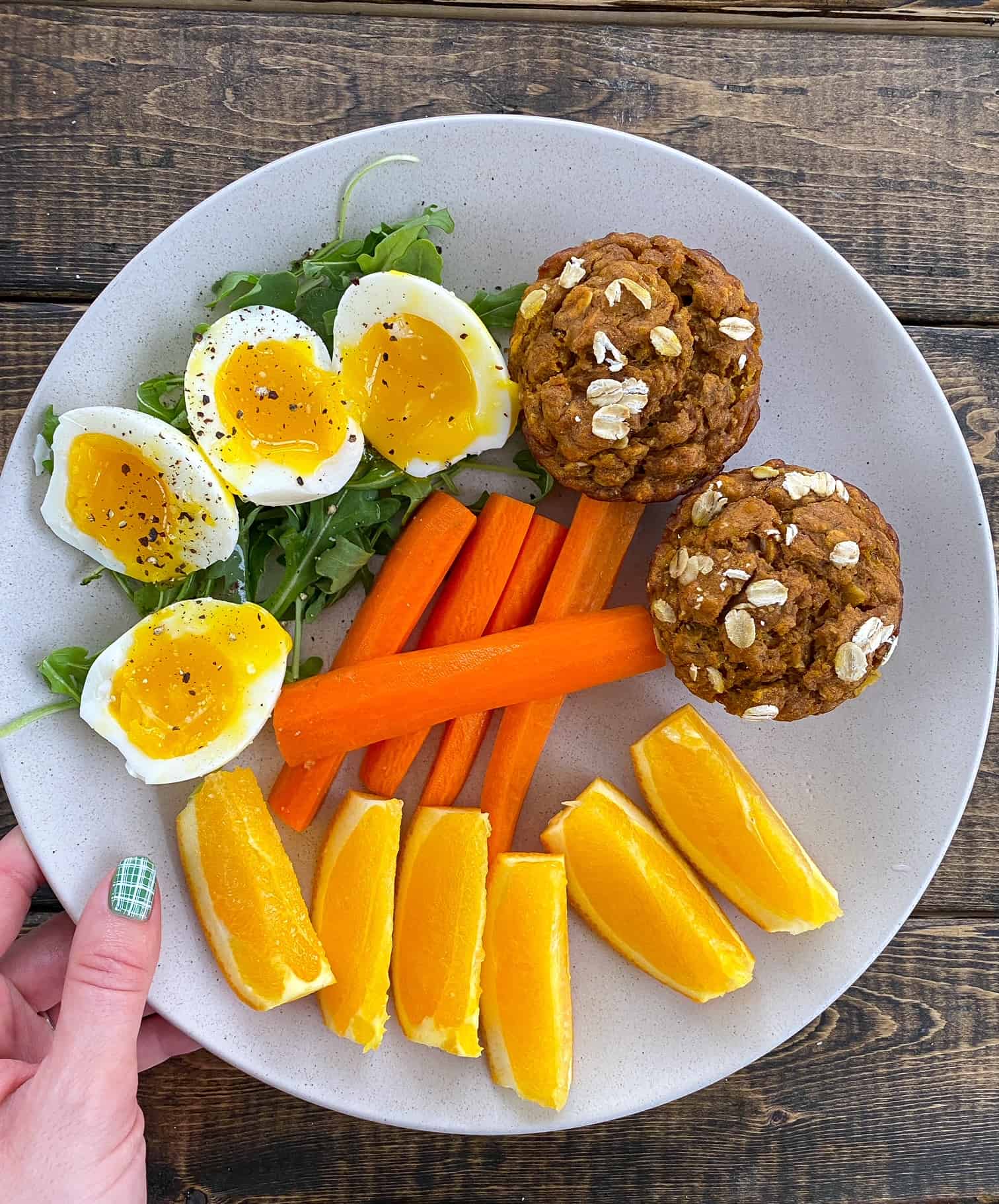
Easy Balanced Lunch Plate
Let’s build an easy, balanced lunch plate! After all, the perfect way to celebrate Heart Month is with a fully make-ahead meal! I made mine with soft, jammy eggs on a bed of arugula. I also used freezer pumpkin banana muffins, crisp carrot sticks and succulent orange wedges. Plus, this meal ticks off all the boxes for a nutritionally balanced meal. This means you are giving your body nourishment and you’re staying full for longer too. Today, I will break down how to build an easy, balanced lunch plate and why it’s important for your health (and fullness), along with providing dietitian-approved, make-ahead foods to save you time!
As a Dietitian and new mom, I’m sharing a balanced lunch plate. This post was sponsored by the Egg Farmers of Ontario; as always, all opinions are genuine.
As a dietitian and new momma, now more than ever, I’m LOVING an easy, balanced lunch plate because they’re simple and include all meal-prepped components. So when hunger strikes, during baby naps or during your work-from-home lunch, you can easily dig in. Alternatively, you can put all your nutritionally-balanced, prepped components into a bento box or lunch container for school or the office.
What is Nutritional Balance?
Nutritional balance is a way of eating to maximize fullness and vitamin and mineral intake. Moreover, it doesn’t have to be complicated. It can be as simple as choosing the following: quality protein, whole grains or starches (aka high-fibre carbohydrates), along with vitamin-rich veggies and fruits.
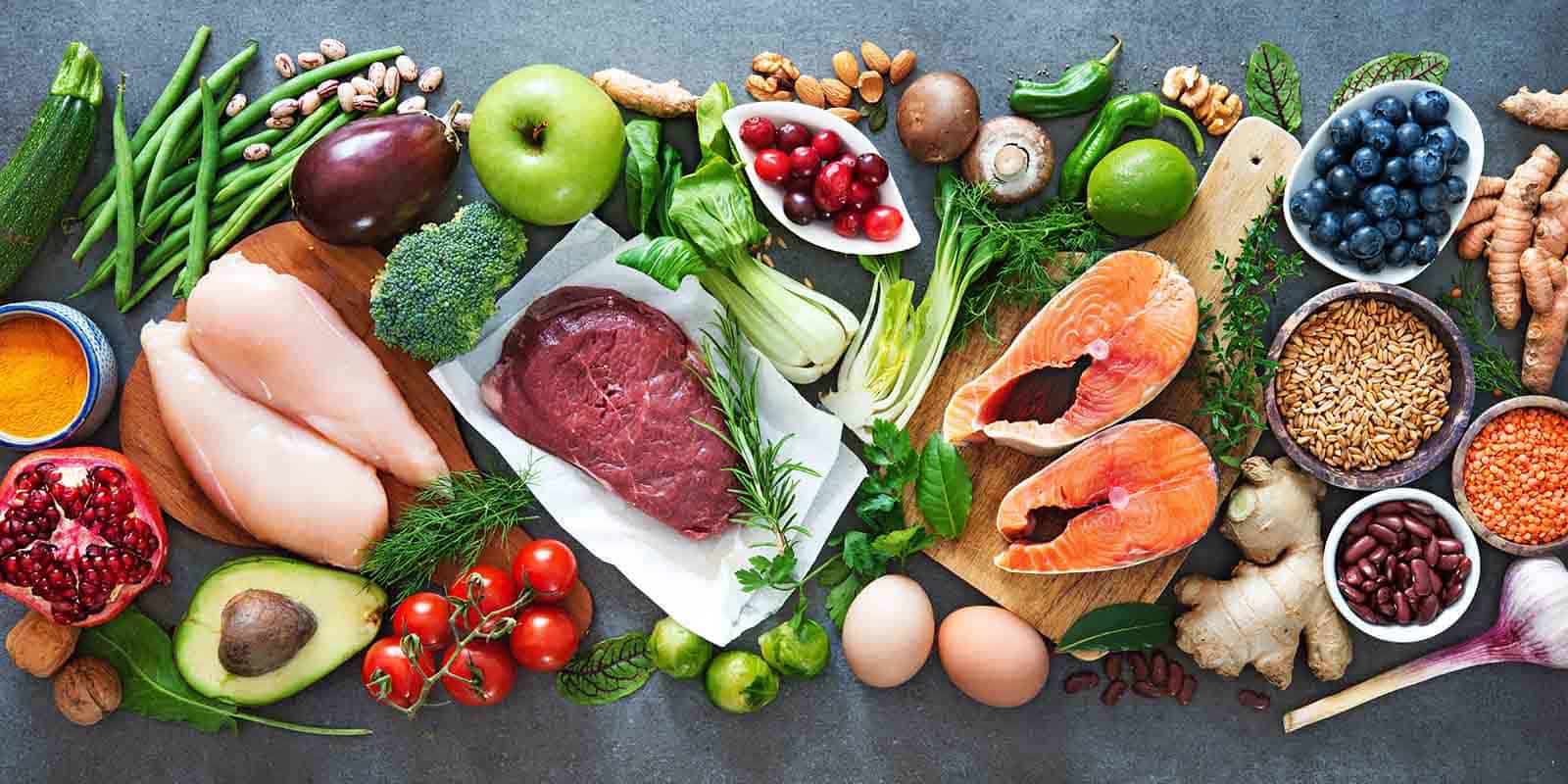
Dietitians speak a lot about nutritional balance because it gives our body energy, fuels our muscles, nourishes our blood cells and enhances our performance or daily functioning. Additionally, eating balanced meals helps to conquer cravings by regulating our blood sugar and prolonging fullness. Moreover, by choosing colourful, wholesome foods we are receiving quality vitamins and minerals, which I have in my balanced plate with protein, carbs and half a plate of fruits and veggies. I chose to tick off the nutritional balance boxes with protein and nutrient-rich jammy eggs, homemade pumpkin banana muffin, vitamin A-rich carrots and antioxidant-containing orange slices.
What is a Balanced Meal Plate?
As you might be aware, Canada’s Food Guide breaks down a balanced meal plate to help meet our nutrition needs by emphasizing a half plate with fruits and veggies, a quarter with protein and another quarter with whole grains. We can use this structure to build our everyday meals to nourish and enjoy!
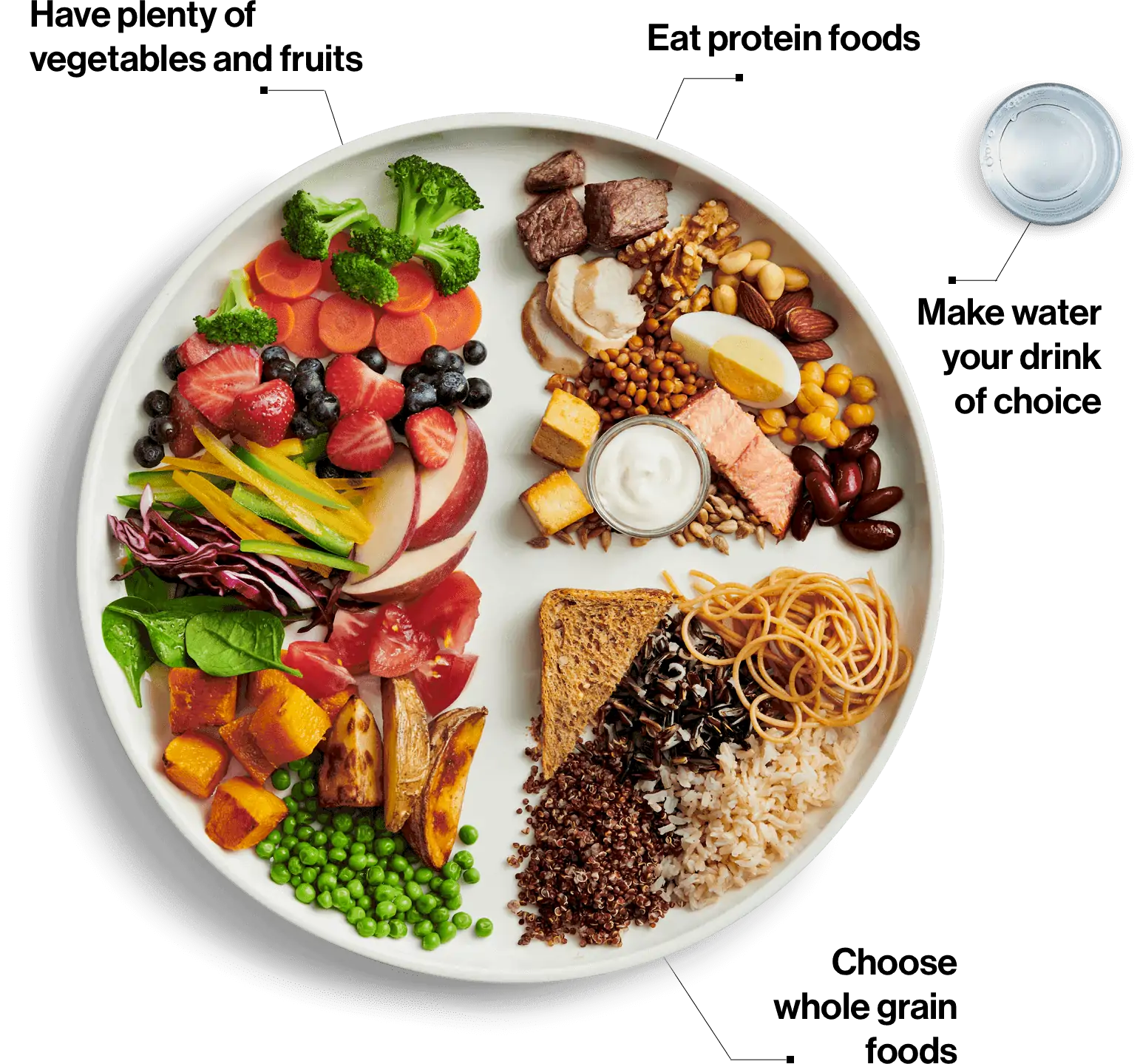
Balanced eating means we are enjoying plenty of vegetables and fruits, whole grain foods and protein foods.
What is Meal Prep?
Meal prep is preparing full meals or components of meals in advance (i.e. protein, veggie and/or starch). Assembling meals or preparing ready-made lunches/dinners saves time for those busy days! Therefore, with your prepped components, you can quickly build a balanced plate.
How to Meal Prep Protein
For building balanced plates, I always start with prepping protein since I find it easiest to inspire the rest of the meal. Here are my Dietitian-Approved top proteins to prep:
Dietitian’s Favourite Meal Prepped Proteins:
- Hard Cooked Eggs or Soft ‘Jammy’ Eggs – They last in the fridge for 7 days so great to prep on the weekend.
- BBQ chicken/salmon/haddock
- Tuna salad
- Lean ground beef cooked or sliced roast beef
- Greek yogurt, Skyr, ricotta, cottage cheese, kefir
- Tofu, edamame or tempeh
- Nuts and seeds, unsalted
- Pulses (beans, chickpeas, and lentils)
- Rotisserie chicken or turkey breast
- Ham or pork tenderloin
- Meatballs or veggie balls
- Grilled or oven-roasted shrimp
- Mini Egg Muffins
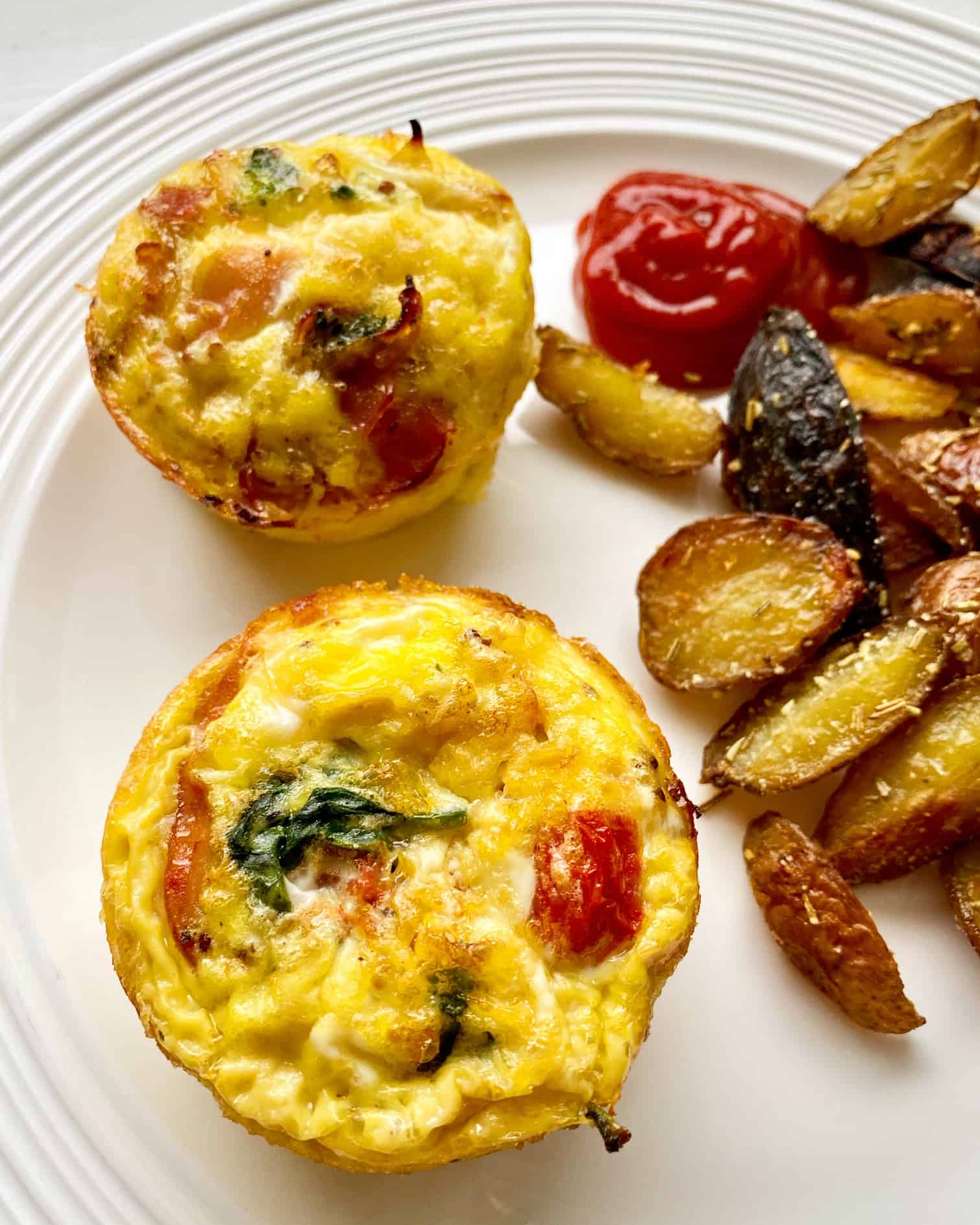
I love prepping Mini Egg Muffins to use in a nutritionally balanced meal complete with 14 essential vitamins and minerals.
What’s the Purpose of Protein?
Protein is crucial for tissue growth and repair. Also, protein is involved in the growth, maintenance and repair of red blood cells, skin, nails and hair, as well as hormone production. This vital macronutrient also supports satiety or fullness and even appears to be helpful in fat loss. Preferably, protein should NOT be burned as a source of energy (unless the body has inadequate calories). This is because protein is slow to break down and digest.
Soft or Hard–Cooked Eggs
Making a batch of soft or hard-cooked eggs is a meal prep go-to for me, EVERY week. After all, having nutritious, fast and accessible protein sources, like hard-cooked eggs, means we can add them to easy lunches, charcuterie boards or part of your snack. Importantly, eggs are also a nutrition powerhouse, with only 70 calories and an impressive 6 grams of protein. That’s egg-cellent!

Check out our blog on Hard Cooked Eggs to Perfection with cooking times for different yolks!
Do I Skip the Yolk?
I do not recommend skipping the yolk. In fact, many do not know that we receive half the protein in the yolk AND most of the nutrition – such as choline for the brain and lutein (a type of carotenoid) for brain and eye health. Can’t beat that for a wholesome protein that comes at a completely affordable price too! (See blog on Cheap, Healthy Meals for only $2/serving meals.)
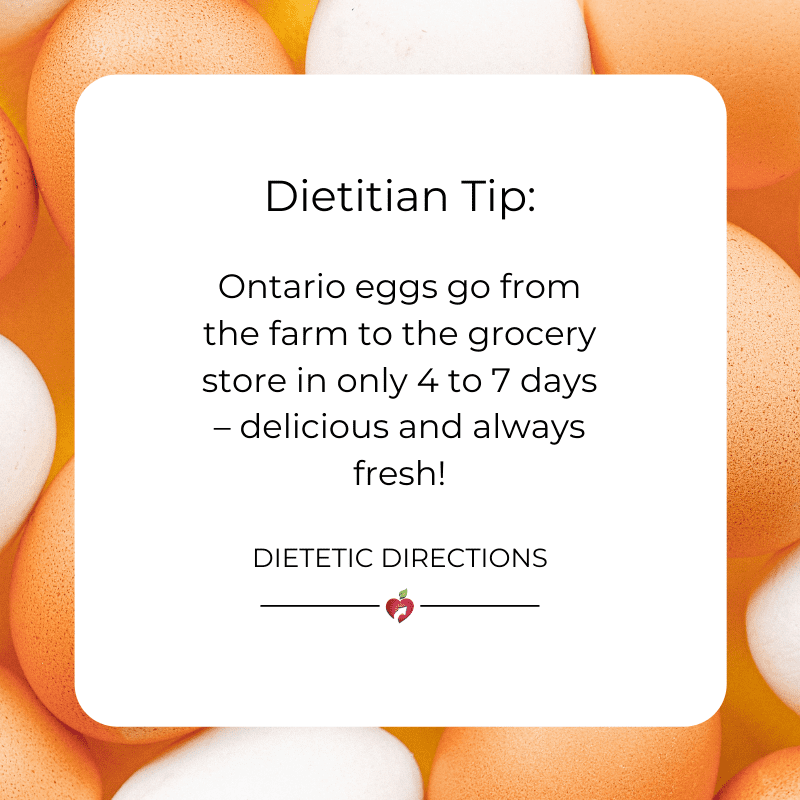
Impact of Eggs on Cholesterol?
Before we go further, let’s first debunk a common misconception that eggs increase blood cholesterol. This nutritious wonder has been given a bad rap for far too long. Fortunately, that’s clearing up as research continues to reinforce that dietary cholesterol has no meaningful impact on blood cholesterol. In fact, eggs appear to be cardio-protective with antioxidants lutein and zeaxanthin, which have been shown in a previous meta-analysis to be important for cardiovascular health. That meta-analysis showed a lower risk for coronary heart disease in people who had the highest concentration of lutein in their blood. Other research suggests that eating eggs increases HDL “good” cholesterol, which carries cholesterol away from artery walls and back to the liver where it can be broken down and eliminated. This helps protect the heart.
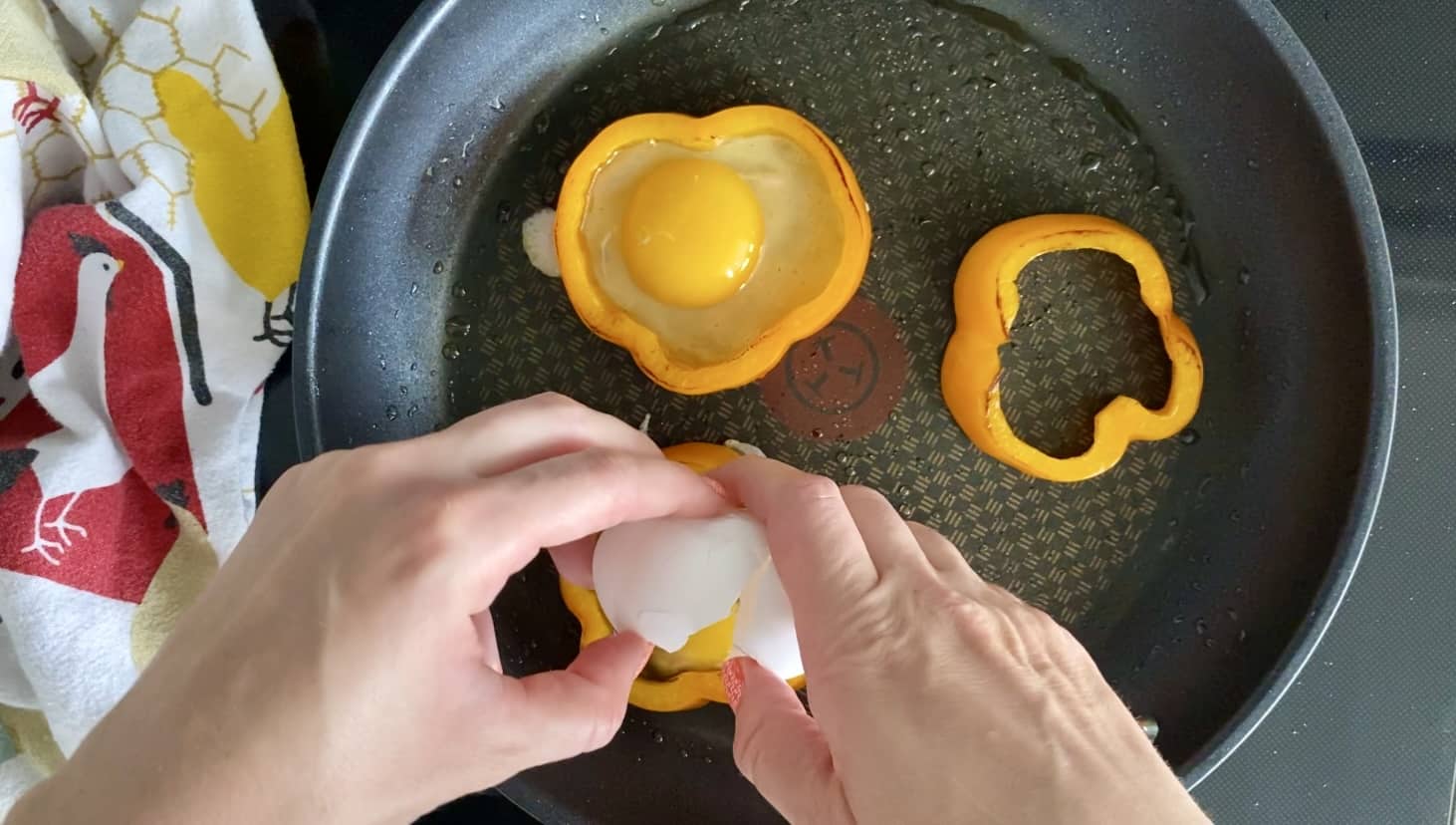
Did you know: Two-thirds of the fat found in eggs is unsaturated (the good kind!) and there are various cardio-protective nutrients such as lutein and choline.
Interestingly, what’s often overlooked is that our livers produce 80% of our cholesterol and will adjust the amount produced based on our diets. This means that we can still enjoy whole foods (like eggs), which have cholesterol in them, but our liver will make less. We also want to look at the entirety of our meal – bacon will have a different impact on heart health compared to Hard-Cooked Eggs with Avocado Toast and a drizzle of olive oil.
Dietitian Meal Prep Tip: Hard-cooked eggs can be stored in your fridge for up to seven days! Share on X
Why Meal Prep Carbs?
Purpose of Carbs: Carbohydrates help increase our energy and act as muscle fuel. Without a doubt, carbohydrates are the body’s preferred and most efficient source of fuel for the brain, muscles and other organs. Emphasizing whole grain, unprocessed carbs helps boost our fibre and B vitamin intake, which is crucial for heart health, fullness and improved digestion.
Dietitian’s Favourite Meal Prepped Carbs:
- BBQ sweet potatoes
- Whole grain crackers
- Muffins (Pumpkin muffins, carrot, Banana Oat etc).
- Whole grains (sprouted grain bread/wraps/crackers, pasta, cereals, quinoa, oats, rice, bulgur, etc.)
- Fruits (fresh, frozen, dried fruits)
- Pulses (beans, chickpeas, and lentils)
- Starchy vegetables (potatoes, peas, corn, squash)
- Milk (think lactose is a sugar, which is a carb!)
- Roasted chickpeas
I always have freezer muffins ready for building a Balanced Lunch Plate! Try our Peanut Butter Banana Muffins!
Did you know? Without adequate carbohydrates, our body breaks down muscle for energy. Consequently, losing muscle decreases performance and slows our metabolism.
What are Veggie Prep Ideas?
- Pre-cutting peppers (last for about 4-5 days in fridge)
- Celery or carrots cut into strips (store in the fridge in water)
- Cherry tomatoes added whole or sliced
- Fresh salad greens, arugula or kale
- Broccoli or cauliflower, chopped into dry-sealed containers
- Roasting peppers for meal additions or can freeze extras
Favourite Easy Fruits to Prep?
- Pre-cutting oranges (last for about 3-4 days in fridge)
- Cut strawberries
- Rinsed grapes
- Apple wedges in lemon juice
- Fresh or frozen berries
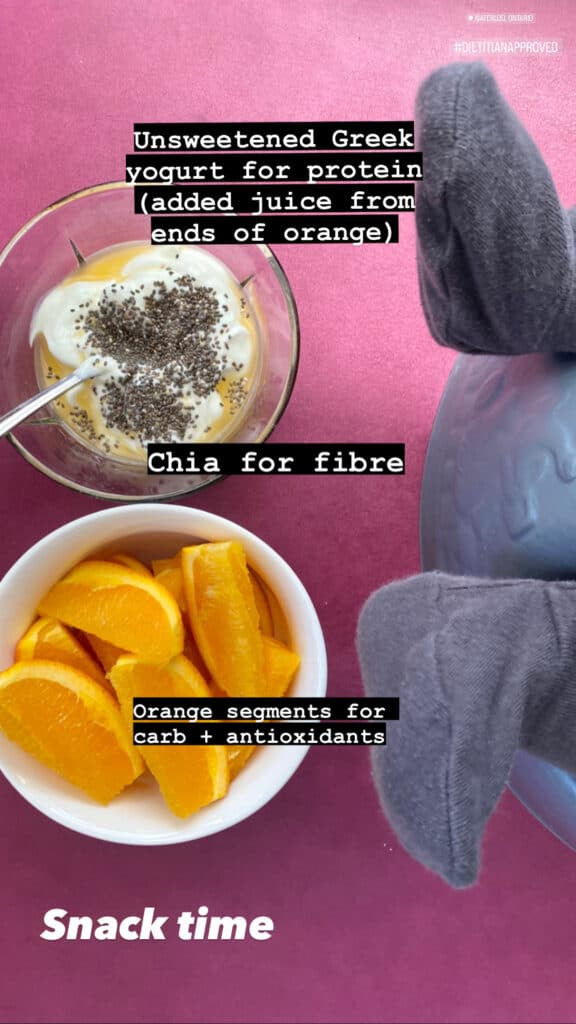
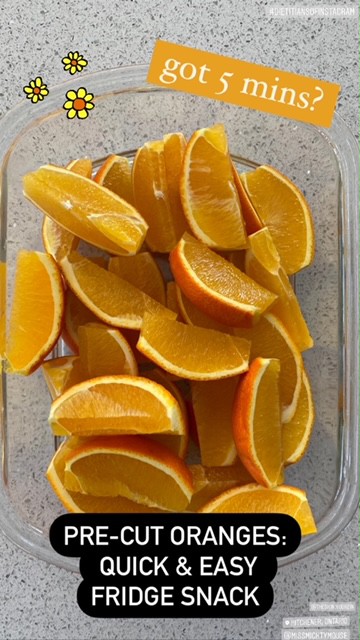
What About Healthy Fats?
Finally, another science-based tip for improving heart health is to emphasize anti-inflammatory fats – these include monounsaturated fats (like olive oil, avocado oil, eggs, nuts and seeds, avocado) along with polyunsaturated fats in fatty fish like salmon, trout, mussels, squid, mackerel. These types of fats are considered beneficial because they can improve cholesterol, decrease inflammation, and stabilize heart rhythms. Also, these foods provide nutrients and vitamins or antioxidants to support our body cells – like vitamin E, vitamin A and magnesium.
Boost healthy fats with this Avocado Egg Plate recipe
Dietitian-Approved Suggestions for Adding Healthy Fats:
- Use olive oil for salad dressing (and remember an acid or vinegar to balance flavours. I use a 2:1 ratio of oil to vinegar).
- Include unsalted nuts or seeds as part of your meal (aim for max around ¼ cup per day) for heart-healthy, antioxidant-rich monounsaturated fats.
- Have meal prep containers ready with a variety such as walnuts, almonds, hazelnuts, sunflower seeds, peanuts, etc.
- Include fatty fish in your meal prep proteins two to three times a week.
- Include hummus and peanut butter with sandwiches, smoothies or in baking like our Peanut Butter Muffins.
- Mash in avocado to tuna salads or devilled eggs for a healthy fat boost.
- Add an olive oil drizzle on ricotta toasts, avocado toasts or hard-cooked eggs.
- Include smashed avocado on toast or guacamole as a condiment.
- Add olives for monounsaturated fat to sandwiches, salad or side garnish.
Blistered Tomato Ricotta Toast recipe uses olive oil for healthy fats!
Top 3 Benefits of Balanced Plate Prepping:
- Saves Time: Cook/prep twice as much in less than twice the time. Breaking down preparation into smaller steps allows for easy meal assembly later!
- Improves Nutrition: When we prepare foods in advance, we are more likely to choose homemade options that tend to be higher in protein, veggies, healthy fats and lower in salt and calories.
- Saves $$: Meal Prepping allows you to cook more at home, and this saves us from expensive take-out, eating out or buying prepared foods (i.e. pre-cut veggies or pre-seasoned chicken).
Bottom Line:
When building balanced plates, be sure to tick off all the boxes for nutritious components. This means you want an unprocessed protein, high-fibre carbohydrate, half your plate with fruit and veggies and some healthy fats. This approach of ticking off components that you can prep ahead definitely helps many of our clients. Finally, be sure to check out our blog for more tips on tips on meal planning and meal prepping.
Easy Balanced Lunch Plate Recipe
Serves: 1
Prep Time: 10 minutes
Ingredients:
2 hard or soft cooked eggs (see blog for cooking times)
Carrot sticks
Orange segments
Muffins (made-ahead and stored in freezer)
Arugula
Salt and pepper on egg
Easy Balanced Lunch Plate Directions:
- To balance your plate, choose foods from each food category: Carbs (including grains and fruits), protein, veggies/fruit and healthy fats.
- For added convenience, prep all components ahead of time.
- Assemble on a plate using ratios for half your plate fruit and veggies, quarter protein and quarter starch.

Easy Balanced Lunch Plate
Building an Easy Balanced Lunch takes prepping and then speedy assembly!
Ingredients
- 2 hard or soft cooked eggs (see blog for times)
- Carrot sticks
- Orange segments
- Muffins (make ahead and store in freezer)
- Arugula
- Salt and pepper on egg
Instructions
- To balance your plate, choose foods from each food category: Carbs (including grains and fruits), protein, veggies/fruit and healthy fats.
- For added convenience, prep all components ahead of time.
- Assemble on a plate using ratios for half your plate fruit and veggies, quarter protein and quarter starch.



